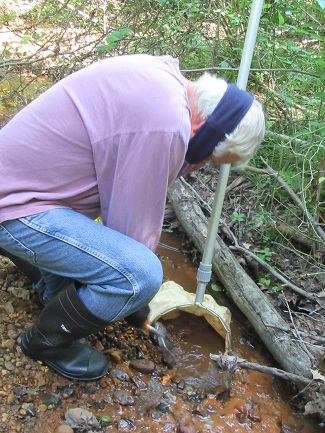On June 26, 2020, four FODM volunteers and one Westgrove P.A.C.K. volunteer conducted habitat quality testing in an unnamed intermittent stream flowing through Mount Vernon Park into west Dyke Marsh. This effort was led by Dan Schwartz and Ashley Palmer of the Northern Virginia Soil and Water Conservation District (NVSWCD).
From 9:30 a.m. to 12 noon, the group took 20 samples from the stream within a 100-meter span, with the goal of identifying 100 living benthic macroinvertebrates. They found these species: 13 scuds, three trueflies, one aquatic worm and one “other.”
The type of invertebrates in a stream is one indicator of stream quality. Some species are tolerant of degraded environments and others are very sensitive. Most streams in Fairfax County are impaired.
The scoring system that rates ecological condition is as follows: >14, acceptable; 8 to 14, partially acceptable; <8, unacceptable. The stream score was 3, thus in unacceptable ecological condition.
The NVSWCD staff urged caution in analyzing the score for several reasons. Because of coronavirus pandemic’s risk and restrictions, testing was rescheduled several times and by June 26, the water levels were low. Taking samples earlier in the spring when there was more water would probably have yielded more organisms.
Dates of sampling and scores:
2020, June 26 -- 3; 2019, April 16 – 6; 2018, May 5 – 9; 2017 – Stream was too dry to conduct sampling.; 2016, May 11 -- 6
FODM thanks Daniel Schwartz, Ashley Palmer, David Barbour, Jim Gearing, James Kelly and Megan Kesling for helping.
Photos contributed by Glenda Booth
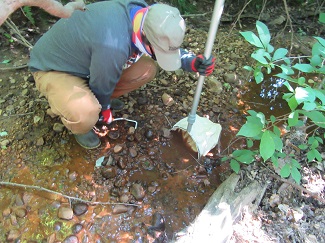 James Kelly collected sediments from the stream bed. James Kelly collected sediments from the stream bed. |
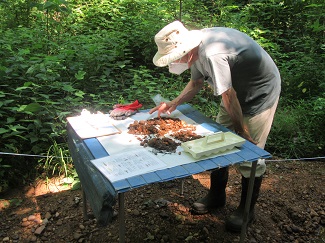 Jim Gearing sorted through the sediments he collected. Jim Gearing sorted through the sediments he collected. |
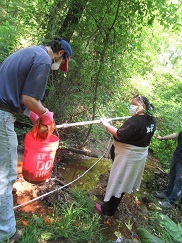 Megan Kesling deposited sediments into a bucket held by Dan Schwartz. Megan Kesling deposited sediments into a bucket held by Dan Schwartz. |
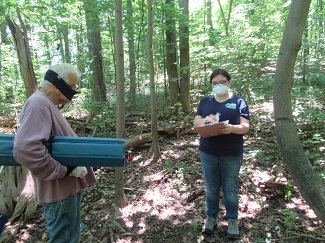 Ashley Palmer compiled data from the group’s collection activity. Ashley Palmer compiled data from the group’s collection activity. |
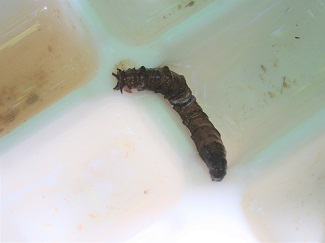 A truefly, one of the organisms found in the sediments. A truefly, one of the organisms found in the sediments. |
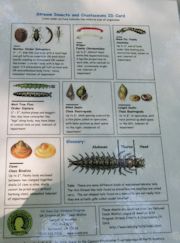 The guide to benthic macroinvertebrates that the volunteers used to identify organisms. The guide to benthic macroinvertebrates that the volunteers used to identify organisms. |
Why Monitor? By Ashley Palmer
The intermittent stream monitored by the Friends of Dyke Marsh only has flowing water for part of the year and is fed by springs and a high seasonal groundwater table. Each spring, "Quander Stream" brings water from the streets surrounding Mount Vernon District Park to Dyke Marsh, along with anything it might have picked up along the way like roadside debris or animal waste from the Westgrove Dog Park.
By looking at the benthic macroinvertebrates found in "Quander Stream," we can indirectly measure the quality of water that feeds into Dyke Marsh. Biological data (like macroinvertebrate sampling) can indicate long-term health trends, depending on the number and diversity of organisms we find.
Although water quality scores for "Quander Stream" appear to be low, we have to keep in mind that the stream dries up yearly, limiting the organisms that can live there. At this site, we instead look at seasonal trends and confirm the continued presence of macroinvertebrates. Each year we ask, "Are we finding macroinvertebrates? Are they the same ones as last year?" And when we collect data each year to confirm, we find that the answer is yes. If this is not the case in the future, we can take action to keep "Quander Stream" and Dyke Marsh, unimpaired.
To learn about water quality in Virginia and the value of stream monitoring, visit the Izaak Walton League of American site: https://www.iwla.org/water/regional/virginia

